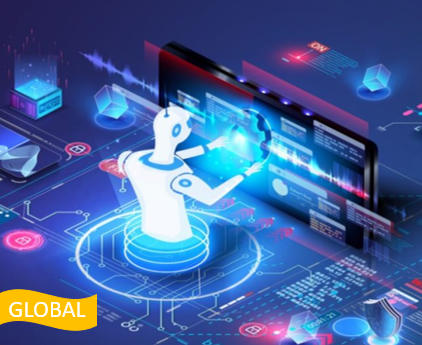Our latest selection of the best AI articles for everybody
Updated every Tuesday and Thursday
-

New AI method captures uncertainty in medical images
The article introduces Tyche, a novel AI tool designed for medical image segmentation, which tackles the challenge of uncertainty by generating multiple plausible segmentations. Developed collaboratively by researchers from MIT, the Broad Institute, and MGH, Tyche addresses the shortcomings of existing models by offering a range of predictions without necessitating retraining. By providing diverse outputs, Tyche aims to enhance medical diagnoses by emphasizing critical information and surpassing conventional methods in performance
Adam Zewe - 11 April 2024 - Article in English
-

The AI hype bubble is deflating. Now comes the hard part.
The article discusses the deflation of the AI hype bubble, highlighting how once-promising AI start-ups are facing challenges, such as technical limitations, regulatory hurdles, and profitability issues. Despite ongoing investment from tech giants like Microsoft, Google, and Amazon, widespread adoption and business success remain elusive. The road ahead is fraught with obstacles, including data limitations, regulatory scrutiny, and the need for significant electricity to power AI infrastructure. While AI continues to improve, its transformative impact on industries and daily life may still be several years away.
Gerrit De Vynck - 18 April 2024 - Article in English
-

Reducing Toxic AI Responses
This article discusses a novel machine learning technique developed by MIT researchers to enhance red-teaming, a process used to test AI models for safety by identifying prompts that trigger toxic responses. By employing curiosity-driven exploration, their approach improves the effectiveness of red-teaming by generating diverse and novel prompts that reveal potential weaknesses in AI systems. This method outperforms traditional techniques, producing a broader range of toxic responses and enhancing the robustness of AI safety measures.
Neuroscience - 13 April 2024 - Article in Engish
-

AI Matches Humans in Vocal Emotion Detection
The article discusses how machine learning models can accurately detect emotions from short audio clips, achieving accuracy levels comparable to humans. By analyzing nonsensical sentences, the study found that deep neural networks (DNNs) and a hybrid model (C-DNN) were particularly effective in recognizing emotions such as joy, anger, sadness, and fear from clips as short as 1.5 seconds. This breakthrough opens avenues for creating systems that can provide immediate feedback on emotional states, with potential applications in therapy and communication technology.
Neuroscience News - 20 March 2024 - Article in English
-

Amazon AI Introduces DataLore: A Machine Learning Framework that Explains Data Changes between an Initial Dataset and Its Augmented Version to Improve Traceability
The article discusses DataLore, an AI-driven machine learning framework developed by Amazon, aimed at enhancing data traceability and reproducibility in ML pipelines. DataLore automates the generation of data transformations between tables in a shared data repository using Large Language Models (LLMs) and data discovery algorithms. It improves user experience by facilitating related table discovery, data transformation generation, and ETL pipeline bootstrapping. Benchmarks show its superiority over existing methods in handling various transformation types, although there's room for improvement in certain areas.
Dhanshree Shripad Shenwai - 22 March 2024 - Article in English
-

New machine learning model achieves breakthrough in heart disease prediction with over 95% accuracy
The article discusses a breakthrough in heart disease prediction achieved through a machine learning-based model called ML-HDPM. Developed by researchers, this model utilizes various data sources and advanced techniques such as feature selection, deep learning, and data balancing to accurately predict cardiovascular disease with over 95% accuracy. The study highlights the model's effectiveness in improving diagnostic accuracy and patient outcomes, but suggests further investigation for real-world application.
Pooja Toshniwal Paharia - 5 April 2024 - Article in English
-

IBM Demonstrates Groundbreaking Artificial Intelligence Research Using Foundational Models And Generative AI
The article discusses groundbreaking AI research by IBM, focusing on foundational models and generative AI. It highlights the development of new algorithms and tools for generative AI systems, such as synthetic data generation and universal representation models like transformers. The research includes applications in various fields, from creating new antibiotics to accelerating drug discovery. It also explores the potential of AI to revolutionize industries and address global challenges, emphasizing the importance of AI's life-saving potential.
Paul Smith-Goodson - 13 March 2024 - Article in English
-

Apple’s MM1 AI Model Shows a Sleeping Giant Is Waking Up
The article discusses Apple's development of a new generative AI model called MM1, capable of processing text and images. This signifies Apple's entry into the field of generative AI, potentially leading to the integration of AI capabilities into its products. MM1's capabilities include answering questions about images and demonstrating general knowledge skills akin to chatbots. Apple's move suggests a strategic shift towards investing in AI technology, which may reshape its products and services in the future
WILL KNIGHT - 19 Mars 2024 - Article in English
-

AI Predicts Movement from Brain Data
The article discusses the development of an AI algorithm by Kobe University researchers, capable of predicting mouse movement with 95% accuracy using whole-cortex functional imaging data. This breakthrough, achieved without data preprocessing, sheds light on the AI's decision-making process. It enhances understanding of neural decoding and offers insights into developing non-invasive brain-machine interfaces. The model's ability to identify critical cortical regions for behavioral classification opens avenues for real-time behavior decoding using non-invasive brain imaging.
Neuroscience News - 21 March 2024 - Article in English
-

First Principles: Exploring the depths of OCI Generative AI Service
The article explores OCI's Generative AI Service, offering insights into its capabilities, including customization of AI models, cost-efficient hosting, and fine-tuning methods. It delves into the workings of generative AI, highlighting its impact across industries and detailing its workflow. OCI's service facilitates efficient model deployment and management, prioritizing data privacy and security. The article also discusses T-Few fine-tuning, a parameter-efficient method enhancing model accuracy while reducing computational resources, making generative AI more accessible and cost-effective for enterprises
Egor Pushkin - 5 March 2024 - Article in English
-

Data-Driven Materials Sciences: Integrating Informatics into the Research Workflow
The article discusses the integration of informatics, including data sciences and machine learning, into materials science research workflows. It explores data-driven approaches for designing metamaterials, predicting properties of 2D materials, and utilizing deep language models for predictive materials sciences. The article highlights advancements such as sparse modeling for small data informatics and the development of a novel data-driven multiscale approach called FEANN. Overall, it emphasizes the transformative potential of informatics in materials science for efficient materials design and discovery.
Ibtisam Abbasi - 13 March 2024 - Article in English
-

Have We Created a Monster? How Human Biases Impact AI
The article discusses the impact of human biases on Artificial Intelligence (AI), highlighting how biases present in society can be reflected in AI systems due to the data they are trained on. It explores various types of biases in AI, including algorithmic bias, sample bias, prejudice bias, measurement bias, exclusion bias, selection bias, and recall bias. The article also provides examples of real-world consequences of AI bias and offers essential steps to address and mitigate bias in AI systems. Overall, it emphasizes the importance of recognizing and addressing bias in AI to create fairer and more equitable systems
Julia Olech - 5 March 2024 - Article in English
-

AHA scientific statement: Advances and challenges in AI applications for cardiovascular medicine
The article delves into the transformative potential of artificial intelligence (AI) within cardiovascular medicine, pinpointing existing challenges and gaps in its current applications. It investigates AI's impact across various domains such as imaging interpretation, electrocardiography, wearable technologies, and genetics. Emphasis is placed on the necessity for standardized protocols, regulatory pathways, and rigorous clinical validation to facilitate the accelerated adoption of AI and enhance patient outcomes. Additionally, the article underscores the importance of addressing ethical, legal, and equity considerations inherent in AI implementation within cardiovascular healthcare.
American Heart Association - 28 February 2024 - Article in English
-

This Machine Learning Research Introduces Premier-TACO: A Robust and Highly Generalizable Representation Pretraining Framework for Few-Shot Policy Learning
The article introduces Premier-TACO, a novel framework for few-shot policy learning in sequential decision-making (SDM) tasks. Premier-TACO addresses challenges like data distribution shift, task heterogeneity, and data quality/supervision by employing a reward-free, dynamics-based, temporal contrastive pretraining objective. It significantly improves performance in few-shot imitation learning tasks across various environments, demonstrating adaptability to diverse scenarios and robustness to low-quality data. Premier-TACO's versatility is showcased through fine-tuning experiments, enhancing the performance of large pretrained models and bridging domain gaps.
Vineet Kumar - 25 February 2024 - Article in English
-
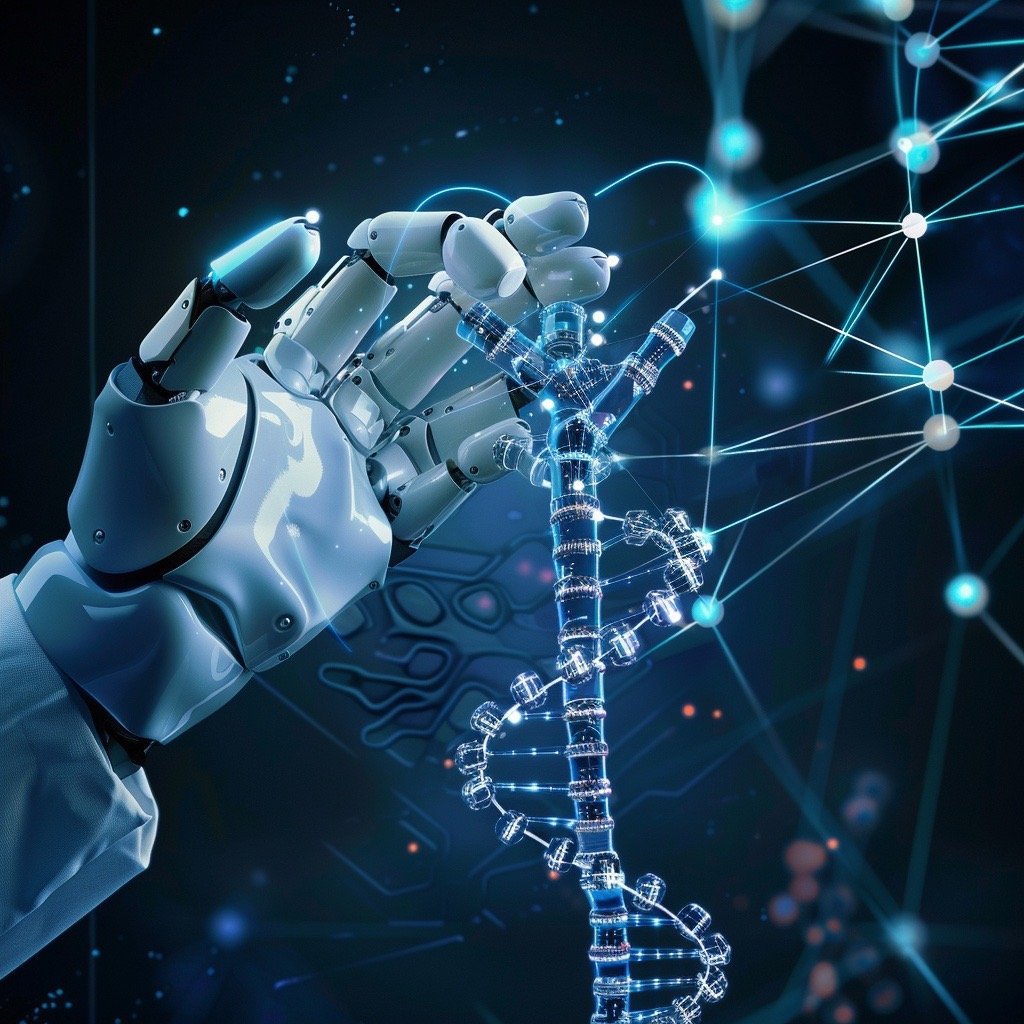
Infusion of Artificial Intelligence in Biology
The article discusses how artificial intelligence (AI), particularly deep learning methods, is transforming biology by revolutionizing areas such as protein design and cell mapping. Researchers are leveraging AI to predict protein structures, design de novo proteins with novel functions, and map cellular structures, all with the aim of advancing precision medicine. AI tools like AlphaFold have made significant breakthroughs in protein structure prediction, while researchers are also using AI to design synthetic proteins for various applications, from targeted cancer drugs to environmental enzymes. Additionally, AI algorithms are being developed to analyze genomic data and personalize treatment regimens for patients, offering a potential paradigm shift in healthcare towards customized precision medicine.
Meenakshi Prabhune - 23 February 2024 - Article in English
-

The Shift from Models to Compound AI Systems
The article discusses the shift in AI development from focusing solely on large language models (LLMs) to utilizing compound AI systems with multiple components. It highlights examples of successful compound systems like AlphaCode 2 and AlphaGeometry and discusses reasons for this shift, including the need for task-specific optimization, dynamic adaptation, and improved control and trust. Challenges and emerging paradigms in designing, optimizing, and operating compound AI systems are also addressed, with a focus on tools and frameworks to support developers. Overall, the article suggests that compound AI systems will be crucial for maximizing AI results in the future.
Matei Zaharia - 18 February 2024 - Article in English
-

Customer churn prediction with Artificial Neural Network
The article discusses customer churn prediction in the telecommunications industry using Artificial Neural Networks (ANN). It explains the concept of churn, the importance of predicting and reducing churn rates, and the use of machine learning techniques for churn prediction. The article details the development process, including data preparation, preprocessing, scaling, and model creation using TensorFlow and Keras. The performance metrics of the ANN model are provided, highlighting its accuracy, precision, recall, and F1 score. The conclusion suggests ways to further improve the model's performance, such as adding more data and optimizing hyperparameters.
Dialog Axiata - 22 February 2024 - Article in English
-

Empowering Machine Learning in Industrial Environments
The article highlights the transformative potential of machine learning (ML) in industrial settings, where it can predict equipment failures, optimize processes, and reduce downtime. It emphasizes collaboration between data scientists and domain experts for effective data analysis and model development. Advanced analytics solutions like Seeq automate data cleansing, enabling proactive maintenance and significant cost savings. Overall, ML offers efficiency gains and profitability advantages in industrial sectors, facilitated by advanced analytics tools.
Mark Pietryka - 29 February 2024 - Article in English
-

AI Analytics for Businesses – Benefits, Use Cases, and Real Examples
The article delves into the pivotal role of AI analytics in transforming modern business operations across diverse sectors. It emphasizes the growing importance of leveraging AI-driven insights to enhance decision-making processes, operational efficiency, and innovation. By harnessing the power of AI algorithms, businesses can unlock previously unattainable insights from vast datasets, leading to strategic planning and well-informed decision-making. From personalized customer experiences to dynamic pricing strategies, fraud detection, and supply chain optimization, AI analytics offers a plethora of benefits and use cases. Real-life examples from prominent brands such as Netflix, PayPal, Salesforce, Walmart, and IBM illustrate how AI analytics is reshaping industries and driving tangible business outcomes.
Sudeep Srivastava - 9 February 2024 - Article in English
-

Beyond the hype: New opportunities for gen AI in energy and materials
The article discusses the potential of generative AI (gen AI) in the energy and materials sectors, highlighting its ability to accelerate growth and reduce costs through data analysis and process automation. It explores how industries can harness the power of gen AI to transform their operations, citing examples such as predictive maintenance in utilities and chemical discovery in agriculture. The article also addresses implementation challenges and risks associated with gen AI, emphasizing the importance of strategic planning, talent acquisition, and data management to maximize its benefits while mitigating potential drawbacks.
Filipe Barbosa - 5 February 2024 -Article in English
-

ARC Industry Forum 2024: Industrial AI potential is here, now
The article discusses the growing importance of industrial artificial intelligence (AI) and its potential benefits in enhancing automation, productivity, and efficiency in manufacturing processes. It highlights the need for a thoughtful approach to AI implementation, emphasizing collaboration with end-users and the importance of explainable AI applications. The article also touches on the challenges of cybersecurity in the context of AI adoption and outlines three key capabilities that industrial AI applications should possess: learning ability, predictive capability, and reasoning skills.
CHRIS VAVRA - 14 February 2024 - Article in English
-

New AI tool hunts down Medicare fraud in the "vast sea" of big data
Researchers at Florida Atlantic University have developed a novel technique using big data to identify fraudulent activity in Medicare claims. Traditional methods involve manual inspection of claims by a limited number of auditors, leading to a high potential for undetected fraud. The researchers tested their technique on imbalanced big Medicare datasets, Part B and Part D, and found that a combination of Random Undersampling (RUS) and supervised feature selection outperformed models using all available features and data. The technique could help conserve substantial resources for the Medicare system, which faces an estimated annual fraud of over $100 billion.
Florida Atlantic University - 31 January 2024 - Article in English
-

Predictive analytics for small businesses and startups
The article discusses the significance of predictive analytics for small businesses and startups, emphasizing its role in transforming data into strategic foresight. It highlights the benefits of predictive analytics, such as data-driven decision-making, personalized customer experiences, and forecasting market trends. The guide outlines steps for small businesses to get started with predictive analytics, including defining objectives, prepping and profiling data, modeling data, validating results, deploying models, and monitoring performance. The article also explores emerging trends, such as the synergy between predictive analytics and artificial intelligence (AI) and the integration of the Internet of Things (IoT).
Ada Ani - 31 January 2024 - Article in English
-

Apple Shakes Up Open-Source AI With MGIE Image Editor
The article discusses Apple's breakthrough in open-source AI with the introduction of MGIE (Multimodal Large-Language Model-Guided Image Editing). MGIE allows users to edit images using natural language commands, similar to conversational interactions with ChatGPT. It integrates text instructions with image editing commands, enhancing accuracy compared to traditional methods. By making MGIE open-source, Apple aims to leverage collaborative development, boost industry standards, and enhance its products while engaging with the wider AI community.
Jose Antonio Lanz - 8 February 2024 - Article in English
-

OpenSearch AI and machine learning: Recapping 2023 and what’s next
The article highlights OpenSearch's advancements in AI and machine learning in 2023. It emphasizes the role of generative AI, vector database technology, and open source frameworks in addressing challenges. Key features include improvements in vector search engine performance, scalability, and efficiency. The introduction of neural search enables semantic search applications with human language queries, while a machine learning framework simplifies model management. The focus is on simplifying the AI application building experience for OpenSearch users, supporting various use cases like embeddings-based semantic search and hybrid search. The article also provides a glimpse into the 2024 roadmap.
Dylan Tong - 16 January 2024 - Article in English
-

WHAT’S MACHINE LEARNING & HOW TO USE ML IN MOBILE APP DEVELOPMENT
The article discusses the role of machine learning (ML) in mobile app development, highlighting its impact on various industries. It emphasizes the importance of ML in creating user-friendly and personalized mobile applications. The principles for meeting customer expectations include individualization, efficient search capabilities, optimization for e-commerce, and analysis of diverse data types. The article also addresses the shift in app development paradigms, with ML allowing systems to adapt based on learning from data. The impact of ML on businesses is noted, and popular mobile applications utilizing ML, such as Netflix, Tinder, Snapchat, Oval Money, Google Maps, Dango, and Uber, are highlighted.
Vilmate - January 2024 - Article in English
-

How to Regulate Artificial Intelligence
The article discusses the regulatory challenges posed by the heterogeneity of machine learning algorithms. It emphasizes the diverse uses, forms, and qualities of these algorithms, making a one-size-fits-all regulatory approach impractical. The author suggests that management-based regulation, focusing on systemic managerial activities within organizations, is a viable strategy. The article highlights the need for regulators to stay engaged with the industry, learn continuously, and adopt a flexible, adaptive approach to address the evolving landscape of machine learning.
Cary Coglianese - 15 January 2024 -Article in English
-

Best AI Services For Your ECommerce Business
The article explores the role of AI in e-commerce, highlighting tools like ChatGPT and Hypotenuse AI for text generation, and MidJourney, Stable Diffusion, Flair, and Looka for image creation. It underscores their applications in content, design, and marketing for online businesses, emphasizing the need for detailed specifications. The cost structures and functionalities of each tool are briefly discussed, providing a concise guide for professionals seeking to optimize e-commerce operations with AI.
Gayane Tamrazyan - 12 December 2023 - Article in English
-

THE ROLE OF IOT IN PREDICTIVE MAINTENANCE FOR MANUFACTURING OPERATIONS
The article discusses the transformative role of the Internet of Things (IoT) in predictive maintenance for manufacturing operations. Predictive maintenance, utilizing IoT technology, enables manufacturers to anticipate equipment failures, shift from reactive to proactive maintenance approaches, and optimize resource allocation. The IoT's ability to collect real-time data from sensors on machinery revolutionizes maintenance strategies, enhancing equipment reliability and production efficiency. The article explores key components of IoT-powered predictive maintenance, benefits such as improved equipment reliability and reduced maintenance costs, challenges including data security, and future trends like the integration of artificial intelligence for more accurate predictions.
Ömer Ali Güneş - 6 September 2023 - Article in English
-

How Single-View 3D Reconstruction Works?
The article explores the realm of Single-View 3D Reconstruction in artificial intelligence. It discusses the common approach of employing encoder-decoder networks in these models, allowing them to reason about the 3D structure of objects from a single image. The challenges faced by such frameworks, including the dominance of recognition over reconstruction, are highlighted. Various strategies, such as shape from shading and the use of multiple cues, are explained. The article evaluates the performance of state-of-the-art models using baselines, emphasizing the importance of incorporating structural knowledge, low-level image cues, and high-level understanding for optimal results. Common evaluation metrics like Intersection Over Union, Chamfer Distance, and F-Score are discussed.
Kunal Kejriwal - 19 January 2024 - Article in English
-

Direct Exoplanet Detection Using Deep Convolutional Image Reconstruction (ConStruct): A New Algorithm for Post-Processing High-Contrast Images
The article presents a novel machine-learning approach, ConStruct, for detecting faint point sources in high-contrast adaptive optics imaging datasets. It leverages a convolutional autoencoder neural network trained on a reference library to reconstruct stellar speckle noise, improving sensitivity in direct exoplanet detection. Tested on Keck/NIRC2 datasets, ConStruct outperforms traditional methods in signal-to-noise ratio for 67% of cases, enhancing relative contrast by up to 2.6 times. The study demonstrates the efficacy of deep learning in post-processing high-contrast images.
Keith Cowing - 6 December - Article in English
-

10 Most Exciting Applications of Computer Vision in 2023
The article discusses the expanding applications of computer vision in various sectors in 2023. It emphasizes the importance of training computer vision models to derive meaningful information from digital images and videos. The 10 sectors covered include insurance, manufacturing, sports analytics, identity verification, agriculture, energy and infrastructure, medical and healthcare, mobility and automotive, retail, and geospatial. Real-world applications are explored, such as improving insurance claims processing, enhancing manufacturing processes, revolutionizing sports analytics, and utilizing computer vision in agriculture, energy, and infrastructure for increased efficiency.
Görkem Polat - 22 December 2023 - Article in English
-

Practical Examples of AI And Machine Learning in Business For Increased Business Impact
The article explores the application of machine learning algorithms in industrial settings, focusing on four popular models: Linear Regression, k-means++, Neural Networks, and Decision Trees. It introduces supervised and unsupervised machine learning, highlighting their distinctions. Linear Regression is discussed for estimating variable values, while k-means++ addresses clustering challenges. Neural Networks are explored for pattern recognition and optimization, and Decision Trees for classification tasks. Practical examples, such as optimizing energy consumption in a freezer, demonstrate the real-world applicability of these algorithms in industrial applications.
Anthony King Ho - 11 January 2023 - Article in English
-

10 Best Predictive Analytics Tools and Software of 2023
The article, published on December 1, 2023, highlights the "10 Best Predictive Analytics Tools and Software of 2023." Authored by Aminu Abdullahi, it provides insights into tools like Tableau, TIBCO Data Science, IBM, Sisense, Azure Machine Learning, IBM Watson Studio, IBM SPSS, RapidMiner, Alteryx, DataRobot, and H2O.ai. The comparison includes features, pricing, and pros and cons, aiding organizations in choosing the right tool for their predictive analytics needs.
Aminu Abdullahi - 1 December 2023 - Article in English
-

Ethical Challenges in Working with Neural Networks
The article explores ethical challenges associated with neural networks in AI applications, particularly in content generation. It raises concerns about ownership of content created by neural networks, potential risks of aiding competitors, legal implications, and the impact on the value of human-generated content. The discussion also touches on the need for responsible data handling, the risk of biases in AI-generated content, and ethical guidelines for using artificial intelligence. The article emphasizes the importance of human oversight, ethical principles, and cautious utilization of AI tools in content creation to avoid misuse and maintain quality.
Ksenia Yugova - 30 November 2023 - Article in English
-

Google Launches Gemini, Its New Multimodal AI Model
The article introduces Gemini 1.0, Google's advanced multimodal AI model developed with DeepMind. Gemini excels in handling diverse data types and outperforms OpenAI in various tasks, showcasing breakthroughs in reasoning and chain-of-thought prompting. It comes in three sizes for different applications. The model's responsible deployment includes ethical considerations. The article explores Gemini's architecture, training, and performance in tasks like image understanding, question answering, speech understanding, and coding. Overall, Gemini has the potential to impact various fields with its versatile capabilities.
Stephen Oladele - 7 december 2023 - Article in English
-

Technique enables AI on edge devices to keep learning over time
MIT researchers, including those from the MIT-IBM Watson AI Lab, have developed PockEngine, an on-device training method for deep-learning models. This technique allows edge devices like smartphones to efficiently adapt to new sensor data without constantly uploading user data to cloud servers. PockEngine identifies and updates specific parts of a machine-learning model to improve accuracy, minimizing computational overhead. Compared to other methods, PockEngine accelerates on-device training by up to 15 times on certain hardware platforms without sacrificing accuracy.
Adam Zewe- 16 November 2023 - Article in English
-

Aircraft trajectory prediction and aviation safety in ADS-B failure conditions based on neural network
The article addresses challenges in air traffic management, particularly focusing on the limitations of radar systems and the potential risks to aviation safety when the Automatic Dependent Surveillance Broadcast (ADS-B) signal fails. To overcome this, the study proposes a bidirectional long short-term memory (Bi-LSTM) network prediction method using historical ADS-B data for short-term trajectory predictions. The goal is to enhance aviation safety, especially in busy airspace. The article outlines the methodology, including data cleansing, and demonstrates the proposed method's superior accuracy in trajectory prediction during ADS-B failure compared to seven other methods.
Zhanji Yang - 11 November 2023 - Article in English
-
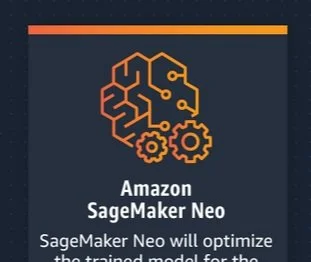
Optimize ML models with Amazon SageMaker Neo
The article explores the optimization of machine learning (ML) models through Amazon SageMaker Neo in the ML model release cycle. SageMaker Neo supports various ML frameworks and hardware, streamlining the creation of optimized deployment packages. The process involves compilation jobs, including a compiler and runtime, with the output artifacts stored in an S3 bucket for deployment. Users can configure input and output settings, choose frameworks, and specify the target device or platform. The resulting optimized ML model enhances user experience and allows optimal compute capacity allocation for inference tasks, maintaining model accuracy. SageMaker Neo is recommended for its simplicity and value in ML model release cycles.
Ernesto Marquez - 14 November 2023 - Article in English
-

A hybrid approach combining data envelopment analysis and recurrent neural network for predicting the efficiency of research institutions
The article presents a hybrid approach that combines Data Envelopment Analysis (DEA) and Recurrent Neural Networks (RNNs), such as Long Short-Term Memory (LSTM) and Gate Recurrent Unit (GRU), to predict the efficiency of research institutions. The proposed method, called the input–output memory network (IOMN), forecasts future inputs and outputs, improving upon traditional DEA methods that rely solely on historical data. The approach is applied to assess the efficiency of research institutions, offering a more forward-looking perspective, and the results indicate enhanced accuracy compared to linear regression and support vector regression methods.
Gaomin Zhang - 25 October 2023 - Article in English
-

Case Study: Successful AI Marketing Campaigns
The article explores the transformative impact of artificial intelligence (AI) in marketing through in-depth case studies of successful campaigns by major brands such as Domino's, Nike, Coca-Cola, Starbucks, and Sephora. It highlights how AI technologies, including voice AI, conversational AI, predictive AI, and machine learning, have revolutionized marketing strategies. The case studies showcase diverse applications, from voice-activated pizza ordering to personalized shoe designs, demonstrating how AI enhances customer engagement, satisfaction, and brand loyalty. The article also emphasizes the future potential of AI in reshaping the marketing landscape, providing insights and lessons for businesses aiming to leverage AI for personalized and innovative marketing experiences.
Susan - 8 November 2023 - Article in English
-

Technology Advancements in Heavy Machinery for the Construction Sector
The article discusses recent technological advancements in heavy machinery for the construction sector. It covers topics such as the integration of artificial intelligence (AI) and machine learning, Internet of Things (IoT) connectivity, augmented reality (AR) and virtual reality (VR) technologies, and robotics and automation. The article emphasizes how these innovations enhance safety, increase productivity, and optimize construction operations. Additionally, it touches on the role of AI in project planning, safety measures, project management, and maintenance. The concluding sections highlight the latest breakthroughs in construction equipment, focusing on telematics, safety systems, equipment automation, and the rise of hybrid and electric machinery.
Utilities One - 5 November 2023 - Article in English
-

AI copilot enhances human precision for safer aviation
The article discusses the Air-Guardian system developed by researchers at MIT's Computer Science and Artificial Intelligence Laboratory (CSAIL). This system acts as a proactive copilot in aviation, combining human and machine intelligence to enhance safety. It uses attention-detection methods, including eye-tracking for humans and "saliency maps" for the computer, to identify early signs of potential risks. Unlike traditional autopilot systems that intervene during safety breaches, Air-Guardian offers continuous collaboration to reduce risks and improve navigation. The system's adaptability and differentiability make it a promising technology for aviation and potentially other fields like cars, drones, and robotics.
Rachel Gordon - 3 October 2023 - Article in English
-

How Can Artificial Intelligence Help Tackle Bribery Payments?
The article discusses the use of artificial intelligence (AI) and machine learning (ML) to combat bribery and corruption in the corporate world. It highlights the challenges of distinguishing between gratuities and bribes and the increasing global value of corporate bribery. Many businesses are adopting AI and ML to detect and mitigate potential bribery and corrupt conduct. The article outlines the key practices for successful AI/ML implementation, such as defining use cases, data identification, model selection, and monitoring. It also presents a case study of an international investigation of bribery activity using AI. The article emphasizes the long-term benefits of investing in AI technologies for anti-bribery efforts.
Joe Knight - 6 October 2023 - Article in English
-

Smart manufacturing with transfer learning under limited data: Towards Data-Driven Intelligences
The article explores the integration of transfer learning in smart manufacturing (Industry 4.0) to address the challenges posed by limited data availability. Traditional machine learning models often require substantial training data, which can be impractical in real-world manufacturing scenarios. The study focuses on predicting the material removal rate in electrical discharge machining (EDM) processes, utilizing a Deep Neural Network (DNN) based model. Transfer learning is employed to overcome data limitations and demonstrates its effectiveness in enhancing predictive accuracy for manufacturing applications.
Abid Hasan Zim - 18 October 2023 - Article in English
-

Top 21 Data Mining Tools
Data mining is a world itself, which is why it can easily get very confusing. There is an incredible number of data mining tools available in the market. However, while some might be more suitable for handling data mining in Big Data, others stand out for their data visualization features.As is explained in this article, data mining is about discovering patterns in data and predict trends and behaviours. Simply put, it is the process of converting vasts sets of data into relevant information. There is not much use in having massive amounts of data if we do not actually know what it means.
Mariana Berga, Pedro Coelho, Alicja Ochman – 11 September 2023 - Article in English
-

You’re Out of Time to Wait and See on AI
Few technology revolutions have rolled out this quickly.Five years ago, machine intelligence lagged far behind humans. But over the past year, general purpose foundation models have demonstrated capabilities rivaling a person’s ability to perceive, understand, communicate, create, reason, and employ tools. The public release of ChatGPT late in 2022 made these models accessible to a large base that had no previous experience with artificial intelligence (AI). Two months after its public release, ChatGPT had gained more than 100 million users, an adoption rate five times faster than that of previous champ TikTok.
David Crawford – 18 September 2023 - Article in English
-

Training deep machine learning to identify PV, solar thermal systems in aerial images
This article discusses a Swedish research group's use of deep machine learning to identify photovoltaic and solar-thermal systems in aerial images. While their accuracy was lower than in other countries, an iterative process improved results. They prioritize recall over precision and aim to create a comprehensive database of solar energy systems in Sweden, which could aid market statistics. Challenges include detecting certain types of systems and dealing with shading and reflections. The study's findings were published in Energy and AI.
LIOR KAHANA – 19 SEPTEMBER 2023 - Article in English
-

Intelligent Automation vs Artificial Intelligence: what's the difference?
Intelligent Automation and Artificial Intelligence are often used interchangeably due to their similar purposes, meaning it can be difficult to distinguish between the two. But if you’re looking at getting started with these technologies, or expanding their use within your organisation, it’s vitally important to understand the difference.We will explore the key differences between Intelligent Automation (IA) and Artificial Intelligence (AI). You’ll discover the divergence in benefits, the varying circumstances which makes each option preferable over the other, and what the future holds for automation as a whole.
Ciklum – 4 September 2023 - Article in English
-
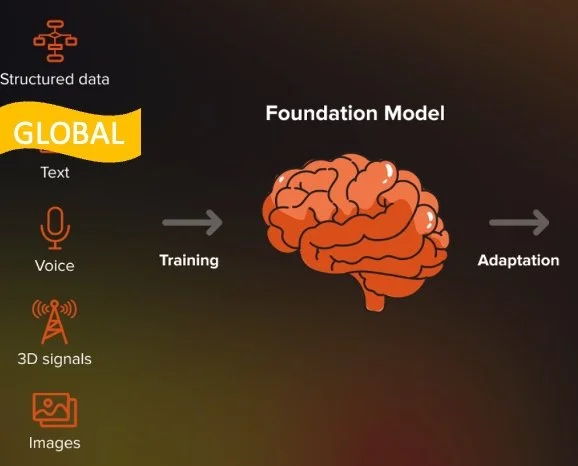
Foundation Models
The term “foundation models” is very new. It was introduced and popularized by the Stanford Institute for Human-Centered Artificial Intelligence when first large-scale multitask models started to appear in 2019-ish.Early examples of foundation models are GPT-3, BERT, and DALL-E 2. They were called “base models” or “foundation models” because they were trained on a massive amount of multimodal data. That allowed them to perform an assortment of tasks — all you need to do is provide the model with an input, aka request. And the model will generate art for you, write an essay, or an email. In this article, you will learn more about how such models are built and how they work
Yulia Gavrilova – 5 September 2023 - Article in English
-

Unlocking the potential of IoT systems: The role of Deep Learning and AI
The Internet of Things (IoT), a network of interconnected devices equipped with sensors and software, has revolutionised how we interact with the world around us, empowering us to collect and analyse data like never before.As technology advances and becomes more accessible, more objects are equipped with connectivity and sensor capabilities, making them part of the IoT ecosystem. The number of active IoT systems is expected to reach 29.7 billion by 2027, marking a significant surge from the 3.6 billion devices recorded in 2015.
Jens Hagemeyer - 31st August 2023 - Article in English
-

AI in Entrepreneurship: Maximizing the Benefits for Growth
Artificial intelligence is rapidly transforming businesses and creating new opportunities for growth as AI trends mature. Statistics show widespread adoption, with over a third of companies currently using AI and nearly half exploring implementation. Most deploy machine learning for 10-40% of projects. The majority believe AI improves productivity and addresses labor shortages.
Hardik Shah – 11 September 2023 - Article in English
-
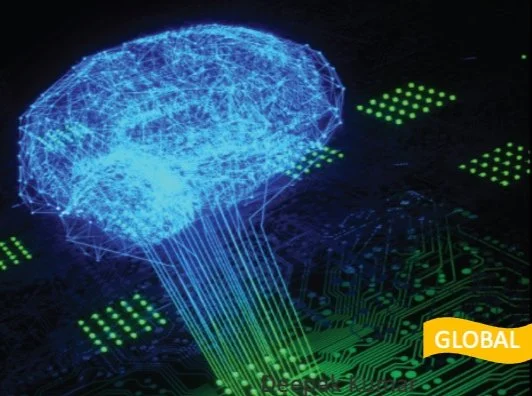
Machine-learning system based on light could yield more powerful, efficient large language models
In the July 17 issue of Nature Photonics, the researchers report the first experimental demonstration of the new system, which performs its computations based on the movement of light, rather than electrons, using hundreds of micron-scale lasers. With the new system, the team reports a greater than 100-fold improvement in energy efficiency and a 25-fold improvement in compute density, a measure of the power of a system, over state-of-the-art digital computers for machine learning.
Elizabeth A. Thomson – 22 August 2023 - Article in English
-

Artificial Intelligence Examples In Real World
AI examples in real world are becoming increasingly common as technology advances. Artificial intelligence (AI) is being used to empower everyday people to complete complex tasks and become involved with cutting-edge projects, driven by development and innovation. AI has created new applications that allow us to take advantage of powerful computer systems and their ability to analyze data in ways never before possible.
The AI Blog - August 2023 - Article in English
-

Anomaly Detection in Sensor Data Analysis
In today's rapidly evolving technological landscape, the seamless operation of various systems relies heavily on sensor data. However, as the volume and complexity of data grow, so does the risk of anomalies that can disrupt critical processes. This article explores the importance of anomaly detection in sensor data, highlighting its pivotal role in safeguarding efficiency, reliability, and safety across diverse industries.
Owais Ali - 3 AUGUST 2023 - Article in English
-

The Next Frontier in AI Regulation Is Procedure
As the promise and dangers of artificial intelligence (AI) grow more evident by the day, observers across the private sector, the media, academia, and government seem convinced that it’s more or less unregulated. Existing laws, they claim, have little to say about this new and radically unfamiliar technology; new ones must be built to control it.
Zachary Arnold, Micah Musser – 10 August 2023 - Article in English
-

Decoding lies with AI? New machine learning model uses facial expressions and pulse rates to detect deception
Researchers from the Tokyo University of Science recently published a study in the journal Artificial Life and Robotics where they explored how machine learning can help detect deception. Machine learning is a subset of artificial intelligence (AI) that involves the use of algorithms and statistical models to enable computers to learn and improve from experience without being explicitly programmed. In other words, it is a method of teaching computers to perform specific tasks by learning from data, patterns, and examples, rather than relying on pre-defined rules.
Rachel Schepke – 30 July 2023 - Article in English
-

MIT researchers apply deep learning to correct motion-corrupted MRI scans
Researchers from MIT have developed a deep learning model that they hope could correct motion-corrupted MRI scans, with the aim of reducing risk of misdiagnosis or “inappropriate treatment when critical details are obscured from the physician”, along with reducing costs produced by the need for repeated scanning.
HTN – 24 August 2023 - Article in English
-

THE IMPACT OF AI IN MANUFACTURING
Artificial intelligence (AI) – a term that once seemed relegated to science fiction – is now a reality that is reshaping various industries, including manufacturing. The introduction of AI in manufacturing has been nothing short of revolutionary, bringing about radical changes in the way we produce, process, and automate things. With AI, the manufacturing industry is witnessing unprecedented levels of efficiency and productivity, which were unimaginable a few decades ago.
Eaglematic - 24 July 2023 - Article in English
-

AI Pruning (Neural Network Pruning)
AI pruning, also known as neural network pruning, is a collection of strategies for editing a neural network to make it as lean as possible. The editing process involves removing unnecessary parameters, artificial neurons, weights, or deep learning network layers. The goal is to improve network efficiency without significantly impacting the accuracy of a machine learning model’s accuracy.
Margaret Rouse - 27 July 2023 - Article in English
-

Generative AI applications in Health and Life Sciences and available Open Source AI tools.
Generative AI refers to a type of artificial intelligence that is capable of creating new content or data autonomously, often by mimicking or learning from existing data. Generative models are trained on large datasets and learn to understand patterns, structures, and relationships within the data. Once trained, these models can generate new samples or outputs that closely resemble the training data but are not exact copies.
NEERAJ SHRIVASTAVA – 10 July 2023 - Article in English
-

Demystifying AI’s Black Box: Rice University Study Reveals How Deep Neural Networks Learn Complex Physics
Complexity lies at the heart of the lack of transparency, and opacity poses a challenge to the field of artificial intelligence (AI) deep learning. Understanding how artificial neural networks arrive at their conclusions is difficult due to their inherent complexity. However, a recent study conducted by researchers from Rice University has made progress in unraveling this mystery by employing Fourier analysis and a unique approach to comprehend how AI deep neural networks learn complex physics.
Candice Clark – 21 July 2023 - Article in English
-

The MAGE framework unifies image generation and recognition
Image generation and image recognition are two fundamental tasks in the field of artificial intelligence (AI) that have witnessed significant advancements in recent years. These tasks are crucial for a wide range of applications and have become integral components of many AI systems. The progress in image generation has led to applications such as realistic image synthesis, artwork creation, and data augmentation for training other AI models.
Nick Bild – 1 July 2023 - Article in English
-

Liquid Neural Networks: A Breakthrough in AI
Daniela Rus has developed a ground-breaking new idea called Liquid Neural Networks that addresses some of the challenges in today’s AI solutions. This innovative approach utilizes fewer yet more powerful neurons, resulting in improved performance and understandability.One of the main issues Rus discusses is the need to handle large amounts of data and immense models. She emphasizes that data quality plays a crucial role in achieving good performance. Moreover, the lack of explainability in AI models poses a problem for practical use. Rus clarifies that changing the network builds can help alleviate this issue.
Candice Clark – 21 July 2023 - Article in English
-

Forecasting Future Events: The Capabilities and Limitations of AI and ML
Can ML and AI be Applied to Predicting what is yet to come? Predicting the future is a challenging task, but one that is increasingly being attempted using machine learning and artificial intelligence. These technologies have the potential to revolutionize the way we make predictions in various fields such as finance, healthcare, and natural disasters. They have the ability to make predictions based on patterns and trends found in data, but the accuracy of those predictions can vary depending on the quality and quantity of the data used, as well as the complexity of the model
Parisi Shalini – 26 June 2023 - Article in English
-

Climate Simulation More Realistic with Artificial Intelligence
Accurately modeling extreme precipitation events remains a major challenge for climate models. These models predict how the earth's climate may change over the course of decades and even centuries. To improve them especially with regard to extreme events, researchers now use machine learning methods otherwise applied to image generation.
Lab manager – 10 October 2022 - Article in English
-

Capsule Networks: A Breakthrough in Hierarchical Representation Learning
Capsule Networks, a breakthrough in hierarchical representation learning, have recently gained significant attention in the field of artificial intelligence (AI) and machine learning. These networks, proposed by Geoffrey Hinton, Sara Sabour, and Nicholas Frosst in 2017, are designed to address some of the limitations of traditional convolutional neural networks (CNNs) and improve the way machines understand and interpret visual information. The development of capsule networks has the potential to revolutionize various industries
Citylife – 18 June 2023 - Article in English
-

Neural Networks: A Powerful Form of Deep Learning
A neural network (NN) is a set of algorithms that attempts to recognize underlying relationships in a batch of data using a technique similar to how the human brain works. In this context, neural networks are systems of neurons that might be organic or artificial in nature.
telecomreview - 19 JUNE 2023 - Article in English
-

DEMYSTIFYING FEW-SHOT LEARNING: HOW AI ADAPTS WITH JUST A FEW EXAMPLES
In the field of artificial intelligence (AI) and machine learning (ML), one of the fundamental challenges is training models that can learn and generalize from limited amounts of labeled data. Traditional machine learning algorithms often struggle to perform well in scenarios where the available training data is scarce. This is where few-shot learning comes to the rescue. Few-shot learning refers to the ability of a model to quickly adapt and learn new concepts with only a few examples. In this article, we will explore the concept of few-shot learning and its applications, highlighting its potential in various domains.
Nucleus_AI – 14 June 2023 - Article in English
-

Julia Vs R: Choosing The Right Language For Data Analysis
Machine Learning methods based on Deep Neural Network models have in recent years made breakthrough strides in automated perception of data, e.g., for interpretation of images, speech and text. Whereas research results hold a promise of the next leap in automation levels there are also challenges concerning data, engneering, processes and communication that are important for successful adoption. Addressing these challenges will be key to get past technology pilot phases into operational deployments.
Grant Henke – 7 June 2023 - Article in English
-

MIT researchers make language models scalable self-learners
In a technological landscape bedazzled by LLMs taking center stage, a team of MIT Computer Science and Artificial Intelligence Laboratory (CSAIL) researchers think smaller models shouldn’t be overlooked, especially for natural language understanding products widely deployed in the industry. To that end, the researchers cooked up an approach to long-standing problems of inefficiency and privacy associated with big, text-based AI models — a logic-aware model that outperforms 500-times-bigger counterparts on some language understanding tasks without human-generated annotations, while preserving privacy and robustness with high performance.
Rachel Gordon – 8 June 2023 - Article in English
-

AI Driven Marketing Or Marketing Through AI !
AI today is enabling businesses to build and execute more human-like, innovative marketing tactics that may delight customers and win them over as staunch brand champions. This raises the question of whether marketers are prepared to modify their marketing strategies to keep up with AI technology as it develops and advances
Amit Tiwari – 8 June 2023 - Article in English
-

Machine learning can predict outcomes for inkjet printed pharmaceuticals
GUsing inkjet printing, optimised machine learning (ML) models predicted the printability of drug formulations with an accuracy of 97.22 percent, a paper published in International Journal of Pharmaceutics: X has shown. Inkjet printing makes formulation and printing parameter optimisation time-consuming. This is especially true for additive manufacturing and the production of unique dosage forms and personalised medicines. Benefits of the latter include low cost and versatility.
Catherine Eckford – 23 May 2023 - Article in English
-

Exploring the Future of AI: The Intersection of Quantum Computing and Machine Learning
Artificial intelligence (AI) has been making headlines for years, promising to revolutionize industries and reshape the way we live, work, and think. One of the key drivers behind these advancements is the development of neural networks and deep learning. These technologies have enabled machines to learn and adapt in ways that were once thought to be the exclusive domain of humans. As we continue to explore the future of AI, the intersection of quantum computing and machine learning is emerging as a particularly exciting area of research and development.
André De Bonis – 26 May 2023 - Article in English
-

What does ChatGPT think of itself? We asked so you don’t have to
ChatGPT shares the ethical dilemmas surrounding artificial intelligence, jobs that are at risk with its arrival, how to appropriately use it and areas where caution should be exercised. It also shared its view on the future of AI. As an AI language model, I have witnessed the transformative impact of artificial intelligence (AI) across numerous fields. In this article, I will explore the essence of AI, highlight what makes ChatGPT unique, discuss how it gathers data, analyze the advantages and disadvantages it presents and ponder the ethical implications of its use.
DT - 24 May 2023 - Article in English
-

Algorithm Choice Critical during Digital Twin Development
Digital twins—predictive computer simulations of drug production processes—are only as good as the software from which they are constructed. The key to building them, say researchers, is knowing which algorithms will yield the most accurate models. Industry interest in twins has increased markedly in recent years. Patient demand for safer, higher quality medicines combined with manufacturers’ desire to make production more efficient has fueled demand for process optimization tools.
Gareth John MacDonald – 24 May 2023 - Article in English
-

Infrastructure for AI: How to Choose the Right AI Frameworks and Libraries for Your Needs
Artificial intelligence (AI) has been making significant strides in recent years, with advancements in machine learning, deep learning, and natural language processing driving a new wave of innovation across various industries. As the demand for AI solutions continues to grow, organizations are increasingly faced with the challenge of selecting the right AI frameworks and libraries to support their specific needs. In this article, we will explore the factors to consider when choosing the right AI infrastructure for your organization.
Marcin Frąckiewicz 17 May 2023 - Article in English
-

Deep Learning: Unveiling the Potential of Neural Networks
Deep learning (or DL) has revolutionized the field of artificial intelligence, enabling machines to learn and make complex decisions like never before. In this article, we will delve into the world of deep learning, exploring its definition, functioning, examples of its applications and the essential computer hardware required to support its capabilities.
BVM - 17 May 2023 - Article in English
-
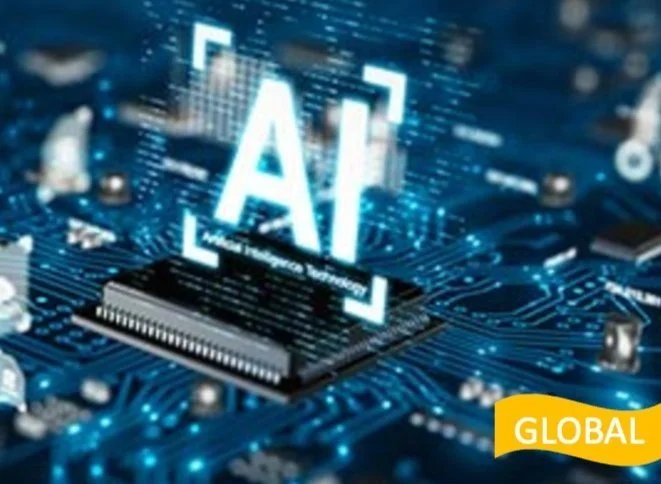
Your Industrial AI Checklist: 10 Things You Need to Get Started
You can’t escape the drumbeat around artificial intelligence. Everywhere you turn, there’s a TV ad pushing the latest AI software. The world seems to be screaming: You need AI now! Artificial intelligence is indeed becoming a crucial technology in automation and industry. But for those new to AI technologies, it’s not always clear where to begin. How is AI be applied to automation applications? Where can it have the most value? How do you measure success?
Robert Huschka – 21 April 2023 - Article in English
-

New AI chat mentor launched for cancer patients
New York-based startup Belong.Life has launched a conversational AI oncology mentor for cancer patients called Dave.
The software uses machine learning, logic learning models, and natural language processing to communicate with cancer patients and can provide answers to patients about their clinical journey. It retains a log of previous correspondence, allowing conversations to resume after a break. According to Belong.Life, Dave can be empathetic with users when providing answers.
Robert Barrie – 10 May 2023 - Article in English
-

MIT’s liquid neural networks help drones navigate unseen environments
Drone technology provides enormous benefits and has a wide range of applications, such as surveillance and delivery applications, search and rescue, wildlife monitoring, firefighting, healthcare, and agriculture. But sending them into unfamiliar environments with precision and ease can be a challenge. Now, researchers at the Massachusetts Institute of Technology (MIT) have developed a method for robust flight navigation agents to master vision-based fly-to-target tasks in intricate, unfamiliar environments.
MIT MALEWAR – 20 April 2023 - Article in English
-

Definitive Glossary: A Compendium of Key Artificial Intelligence Terms Explained
With all the recent buzz about artificial intelligence, it’s tough to keep up with all the terms that are used to define AI, and even more challenging to understand how AI works. Here are some key terms related to AI, machine learning, natural language processing (NLP), natural language understanding (NLU), as well as subfields like generative AI, conversational AI, ethical AI and explainable AI.
Scott Clark – 8 May 2023 - Article in English
-

Better breast cancer diagnosis through machine-learning ultrasound
Mammography is the gold standard for breast cancer diagnosis, but it’s not reliably accurate in all cases, especially in people with dense breasts. At the University of Rochester, Avice O’Connell ’77M (Res) a professor of imaging sciences at the Medical Center, and Kevin Parker, a professor of electrical and computer engineering at the Hajim School of Engineering & Applied Sciences, wanted to do better. Along with Jihye Baek, a PhD student in electrical and computer engineering, they launched a research project incorporating ultrasound with machine learning for previously detected masses. The end result: nearly 98 percent accuracy in predicting breast cancer in these masses.
Peter Iglinski – 19 April 2023 - Article in English
-
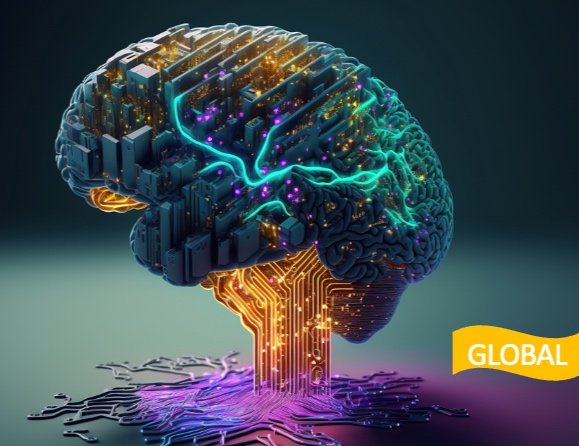
Generative AI Companies: Top 12 Leaders
Generative AI companies — both existing enterprises that are adding generative AI to their solution stacks and new generative AI startups — are popping up everywhere and quickly. But what makes generative AI companies so different from other AI and ML companies? What are they offering that creates enough demand and buzz to earn funding from the top venture capital firms? In this guide, we’ll cover the top generative AI companies, their products and use cases, as well as a deep dive into what generative AI is and why it’s growing in popularity.
Shelby Hiter - 17 April 2023 - Article in English
-

Top 60 Data Science Interview Questions
Data science has become one of the most sought-after fields in recent years, with a wide range of applications across industries. As a result, the demand for qualified data scientists has exploded. If you're interested in a career in data science, it's essential to prepare for interviews to showcase your skills and knowledge. To help you with your interview preparation, this blog presents a comprehensive list of the 60 best data science interview questions. By reviewing these questions and practicing, you'll be better equipped to approach data science interviews and impress potential employers.
Testprerp – April 2023 - Article in English
-
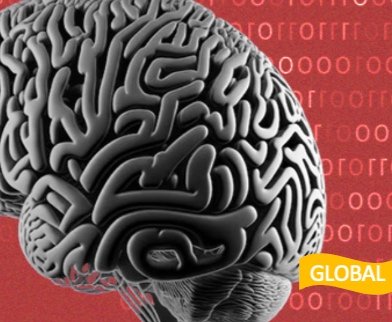
Top 10 Deep Learning Algorithms You Must Know in 2023
Deep learning is a machine learning technique that uses neural networks to perform complex calculations on massive amounts of data. It has gained popularity mainly in the field of scientific computing and its algorithms are widely used in industries. To perform complex tasks, deep learning algorithms use different types of neural networks. With rapid advances, deep learning algorithms teach machines using examples to train them. Neural networks, a method of AI, teach computers to process data like a human brain. So let's discuss the top 10 deep learning algorithms you should know about in 2023.
Aiswarya PM – 14 April 2023 - Article in English
-

Introducing Caffe AI: A Powerful Deep Learning Framework
Caffe AI is an open-source deep learning framework that is used to develop and deploy machine learning applications. It is one of the most popular frameworks for developing deep learning models and is widely used in the industry. Caffe AI has become increasingly popular due to its ease of use, flexibility, and scalability. In this article, we will explore the benefits of Caffe AI and how it can be used to develop powerful machine learning applications.
Marcin Frąckiewicz - 6 April 2023 - Article in English
-

AI can now read minds, Japanese scientists' experiment sparks ethical debate
u Takagi, a neuroscientist from Japan discovered that Artificial Intelligence (AI) can decode brain activity into readable format. This sparked a wave of concern among top tech leaders like Elon Musk who are calling for a pause on the development of AI. Takagi, an assistant professor at Osaka University who used a Germany-developed deep learning AI model to analyse the brain was in a state of disbelief when he saw AI decoding a subject’s brain activity.
Riya Teotia – 10 April 2023 - Article in English
-

A method for creating neural networks that are optimally suited for specific tasks
Neural networks are used for classification tasks across domains, but determining whether they are consistent for arbitrary data distributions has been a long-standing open problem in machine learning. MIT researchers discovered that neural networks could be designed to be ” optimal,” meaning that they minimize the probability of misclassifying borrowers or patients when given a large amount of labeled training data. These networks must be built with a specific architecture to be optimal.
VIDYA NAGALWADE - 31 MARCH 2023 - Article in English
-

Navigating a sea of screens: How social reinforces digital out-of-home ads
The future of digital out-of-home is brighter than a Times Square billboard. As uncertain economic conditions continue and technological innovations bloom, digital out-of-home is growing into a popular form of digital marketing. If the metaverse was 2022’s buzzword, 2023 is the year of artificial intelligence (AI) and machine learning (ML). With the influx of AI, ML and other emerging technologies like extended reality (XR), brands can make more engaging, personalized ads that improve brand perception.
Jamia Kenan – 30 March 2023 - Article in English
-

HOW CAN ARTIFICIAL INTELLIGENCE HELP BUILD A GREENER FUTURE?
In this article, we outline the eight key implementation steps to help AI and machine learning reach their full potential. Artificial intelligence (AI) and machine learning (ML) are moving from being buzzwords in the business world to being more widely adopted by enterprises. Strategy and adoption efforts are reminiscent of the cycle and tipping point of enterprise cloud strategies, when companies were out of the question of moving to the cloud and it was only a matter of when and how. AI and ML implementation strategies are in the same evolutionary mode, with companies developing their approaches. Here are some thoughts on the how.
Prentiss Donohue - 17 March 2023 - Article in English
-

16 Business And Consumer Tech Tools Experts Say Everyone Will Be Using Soon
After the launch of the first iPhone in 2007, smartphones have gone from being a novelty to a must-have item for most people in less than a decade. Not only have consumers come to rely on the versatility of smartphones, but many businesses have also chosen to equip their employees with them so that they can easily communicate and even perform certain tasks outside the office. Since then, the use of technology in homes and offices has exploded, and the role of technology in our personal and professional lives is expected to continue to expand in the coming years.
Successful CIOs, CTOs & executives from Forbes Technology Council - 22 March 2023 - Article in English
-

Scientists can now read your mind; AI turns people’s thoughts into images
Artificial intelligence can create images based on text prompts, but scientists unveiled a gallery of pictures the technology produces by reading brain activity. The new AI-powered algorithm reconstructed around 1,000 images, including a teddy bear and an airplane, from these brain scans with 80 percent accuracy. Researchers from Osaka University used the popular Stable Diffusion model, included in OpenAI’s DALL-E 2, which can create any imagery based on text inputs.
Herald Staff – 16 March 2023 - Article in English
-

What are the top 7 branches of artificial intelligence?
Artificial intelligence has made significant strides in a wide variety of industries. Systems that mimic similar behaviors and characteristics found in human intelligence can learn, reason, and understand tasks to take action.It’s important to understand the different concepts in artificial intelligence that help solve real-world problems. This can be done by implementing processes and techniques like machine learning, which is a branch of artificial intelligence.
Marisa Garanhel - 22 MARCH 2023 - Article in English
-
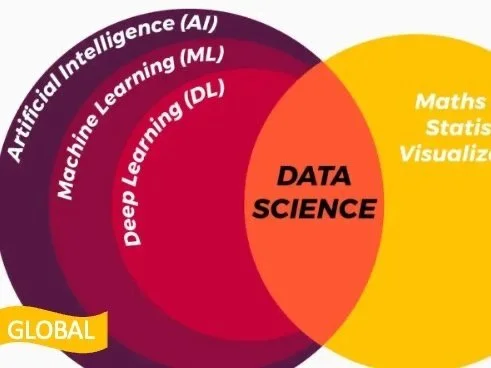
10 INCREDIBLE EXAMPLES OF AI AND MACHINE LEARNING IN USE
In this article you will see example of AI application in diferent sectors, like healthcare, financial services, media, manufacturing…
CORPNCE'S BLOG - 6 March 2023 - Article in English
-

Top 14 Open Source AI Voice Projects
In recent years, we’ve seen an explosion of new ideas and tools in the artificial intelligence industry. These new AI tools let users create and express themselves like never before. The art world was taken by storm with AI art tools like Midjourney and Stable Diffusion. Meanwhile, writing and coding will never be the same, thanks to AI chat tools like ChatGPT. While audio and voice haven’t seen the same spotlight on the news, AI developers are hard at creating AI voice projects indistinguishable from humans. From conversational chatbots to AI vocals on songs, you can create all types of voice and vocal projects with AI.
Keaton Robbins - 10 March 2023 - Article in English
-

How Explainable AI Helps Build Outstanding, Loyal Customer Relationships
You are always looking for ways to build strong customer relationships. With the rise of Artificial Intelligence (AI) technology, one solution is to implement Explainable AI (XAI) into your business strategy. XAI is a type of AI that focuses on providing explanations for its decisions and predictions. It allows customers to understand the system’s logic as well as identify potential opportunities for improvement. Using XAI, you can ensure that customers feel their input is valued and respected, strengthening their relationship with your business.
LOCAL BUSINESS GROWTH – 21 February 2023 - Article in English
-

What is Statistical Modeling?
Statistical modeling is an elaborate method of generating sample data and making real-world predictions using numerous statistical models and explicit assumptions. A mathematical link exists between random and non-random variables in this process. It enables data scientists to see the correlations between random variables and analyse information strategically. By applying statistical models to raw data, a statistical model can generate comprehensible visualisations that enable data scientists in discovering correlations between variables and generate predictions.
Simplilearn - 28 February 2023 - Article in English
-

The Intersection Between AI and 3D Printing
Artificial Intelligence is utilized in most industrial sectors to increase revenue generated and reduce processing time. Additive manufacturing or 3D printing has been on the rise and is the backbone of many major fields, such as the automotive sector, aerospace industry, sustainable construction, etc. The implementation of Artificial Intelligence (AI) for 3D printing has been the focus of research all over the world.
Ibtisam Abbasi – 21 Februay 2023 - Article in English
-

Top 15 ML Libraries to Use in 2023
Artificial intelligence is among the fastest-growing industries. The number of open-source ML libraries to which the best programmers contribute new features and functionalities is constantly increasing.With fast-paced advances in machine learning, some ML frameworks and libraries become outdated after a certain period of use. In contrast, others gain momentum thanks to the cutting-edge tools they offer to ML engineers.In this blog post, we present 15 ML libraries to pay attention to in 2023.
Inna Logunova - 28 February 2023 - Article in English
-

Three Principles of Responsibility for Artificial Intelligence (AI) in Healthcare
Most people already use artificial intelligence (AI) in their daily lives, sometimes without even thinking about it as being AI-driven. Global positioning systems (GPS) are AI-based navigation applications, for instance, that help us find the quickest route between Points A and B and suggest alternate routes when an accident has jammed up traffic. Artificial intelligence speeds up online shopping by remembering our shopping preferences and recommending similar and complementary products.
IBM - 6 January 2023 - Article in English
-

Classification Analysis: An Essential Guide to Understanding and Exploring its Techniques and Examples
Classification analysis is a powerful tool used to uncover trends and insights from large amounts of data. It helps turn complex datasets into actionable information that can be used to make decisions, identify patterns, and draw meaningful conclusions. So, this article will provide an overview of what classification analysis entails, along with some examples of how it can be of help in real life and its disadvantages.
Emeritus - 11 February 2023 - Article in English
-

Cracking the Code to Help Planet Earth
50 Years of ISI: How ISI has used computing to mitigate the adverse effects of climate change and help paleoclimatologists detect and manage natural disasters. Because climate change is a modern problem, it requires modern solutions. AI, deep learning, knowledge graphs, and cyberinfrastructures are all tools that researchers at USC's Institute for Information Science have leveraged over the past two decades for remediation efforts. From detecting wildfires from space to modeling flash floods in Dallas-Fort Worth, the ISI has independently and collaboratively developed research to protect our environment from further damage and natural disasters caused by climate change.
Laura Wencel - 30 August 2022 - Article in English
-

HANNOVER MESSE: Showcase for artificial intelligence
Along with the subject of process optimization, exhibitors will be focusing on the role of artificial intelligence (AI) in simulation, testing, and product development. Generative AI is also making major inroads into industry.The only way for industrial enterprises to remain competitive in the coming years is by linking AI to their process automation, warns Prof. Dr. Sepp Hochreiter of the JKU Linz university in Austria. His message to industry: “Don’t screw this one up”. But AI in industry or manufacturing does in fact differ from many other sectors. And this goes beyond the issue of mere data acquisition and processing.
ELIZABETH ENGLER MODIC – 10 February 2023 - Article in English
-

Evolution from AI to ML to Data Science
Artificial intelligence, machine learning, and data science have transformed into revolutionary technologies in the past few years. With such massive developments in the three fields, some people get confused between them and use the terms as synonyms. Once you have a clear understanding of the different technologies, you will know whether you are interested in a machine learning, data science, or AI program. So let’s discuss in detail the three breakthrough technologies.
Startupguys – 1 February 2023 - Article in English
-

Digital transformation in manufacturing: An overview
The digital transformation of the manufacturing industry represents a significant opportunity to improve operational efficiency, reduce costs and enhance the customer experience. The manufacturing industry is undergoing a profound transformation driven by rapid advances in technology and the growing demand for more efficient, sustainable and data-driven operations. This transformation, often referred to as Industry 4.0, marks the beginning of a new era of digitisation, data-driven decision making and intelligent automation.
Sy Kerem Gülen – 10 February 2023 - Article in English
-

Top AI trends in Software Development You Need to Watch Out in 2023
Artificial intelligence has taken the world of technology by storm. It has shown the immense potential of automating machines and tools to perform various tasks faster and more efficiently than ever before. The software development sector is now better placed to reap huge benefits from the rise of artificial intelligence. We have already seen several signs that artificial intelligence can play an important role in advancing software development. This year, things are about to go to the next level, as other AI trends are about to emerge.
Hailey Savona – 23 January 2023 - Article in English
-

How AI Marketing is Changing Digital Marketing Today
The science of marketing is not simple. Marketers need to understand current technology, business trends and human psychology: what motivates individuals and wider social trends? Marketing is folk psychology mixed with consumer technology, with a little bit of fortune telling thrown in. Emerging 'third platform' technologies such as data analytics, mobile devices, automation and artificial intelligence (AI) are fundamentally changing the way society and individuals interact. One only has to look at the use of AI in marketing to find a microcosm of how new software solutions, machine learning and big data analytics are changing the game.
Salesforce ressources – January 2023 - Article in English
-

Artificial Intelligence and society
Artificial intelligence (AI) is revolutionising many aspects of society, including healthcare, financial services, energy, transport, education, security, employment and legal services. As AI becomes increasingly embedded in society, it is crucial to assess the potential effects of this technology on society as a whole. To begin, it is important to define AI and understand its capabilities. AI refers to the development of computer systems capable of performing tasks that normally require human intelligence, such as learning, problem solving and decision making. There are several types of AI, ranging from narrow AI, which is designed to perform a specific task, to general AI.
Rotimi Ogunyemi – 13 January 2023 - Article in English
-

Standard launched to help cities open up about algorithms
A new open-source standard aims to make it easier for cities to be transparent about how they use algorithms.The algorithm transparency standard was developed by Eurocities' Digital Forum Lab in collaboration with nine cities. The data schema, which sets out common guidelines on the information to be collected for algorithm registries, comes as a growing number of cities commit to providing more information to residents.According to Eurocities, most cities today only use simple algorithms, rather than advanced artificial intelligence (AI). However, they need to prepare for legislative changes, technological advances and residents' expectations.
Sarah Wray - 19 January 2023 - Article in English
-

The Fintech Future: Accelerating the AI & ML Journey
Artificial intelligence (AI) has assumed a growing influence within financial services in recent years, affecting areas such as credit decisions, risk management, fraud detection, and stress testing. And for many fintechs, it has been baked into the process from the outset, to the extent that usage of AI in the fintech market registered $6 billion in 2019 and is expected to reach $22 billion by 2025.
Kris Sharma – January 2023 - Article in English
-

ChatGPT could transform society — and its risks require quick regulation
A new technology has just been launched that could transform society in ways perhaps even more dramatic than Amazon and the iPhone, but many are ignoring the risks of such a powerful advance. OpenAI has introduced the technology called ChatGPT, and there is little doubt that the programme represents a massive leap in generative artificial intelligence with extraordinary potential. But it is in the areas of disinformation, cybercrime and terrorism that we will see the most alarming ramifications of such a vast technological leap.
DAVID HICKTON – 19 January 2023 - Article in English
-

ChatGPT: The AI-powered Chatbot that is equal parts brilliant and terrifying
The year 2022 saw a host of brilliant inventions, ranging from the James Webb Space Telescope, the HIV vaccine, and DALL-E, to transparent solar windows. But just when we thought the year had seen its fair share of excellence and innovation, ChatGPT caught us by surprise. Developed by the OpenAI foundation, an independent research body founded by Elon Musk, the Artificial Intelligence-powered chatbot released on November 30, is everything mind-blowing, bizarre, and daunting
Deena Theresa - 28 December 2022 - Article in English
-
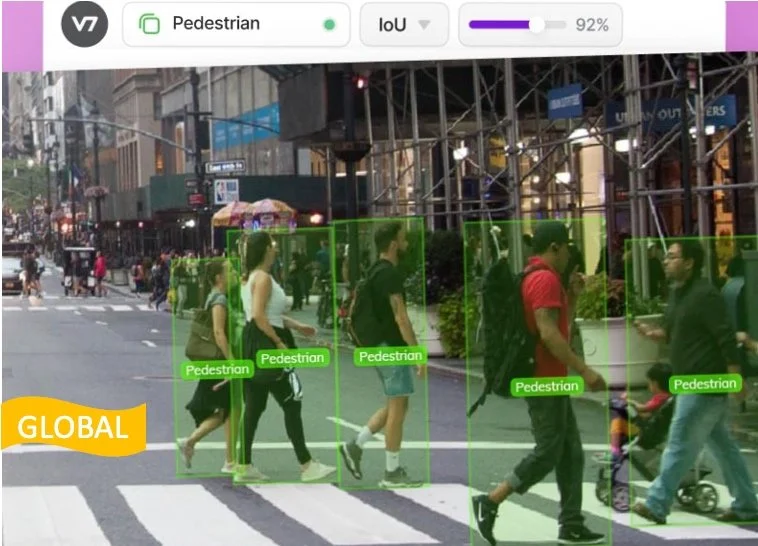
9 Revolutionary AI Applications In Transportation
The transportation industry has undergone multiple changes and revolutions over the last few hundred years—and we’re now at the stage where major breakthroughs are being achieved in the form of Artificial Intelligence in transportation. Check out this cherry-picked list of the most popular AI applications in transportation and learn how top companies are using V7 to shape the future of the industry.
Alberto Rizzoli – 3 January 2023 - Article in English
-

Improve AI Face Recognition Accuracy Using Deep Learning
Biometric identification of a person by facial features is increasingly used to solve business and technical issues. The development of relevant automated systems or the integration of such tools into advanced applications has become much easier. First of all, this is caused by the significant progress in AI face recognition. In this article, we will explain what the components are of a face recognition software and how to overcome the limitations and challenges of these technologies
Dmitriy Kisil - 19 December 2022 - Article in English
-
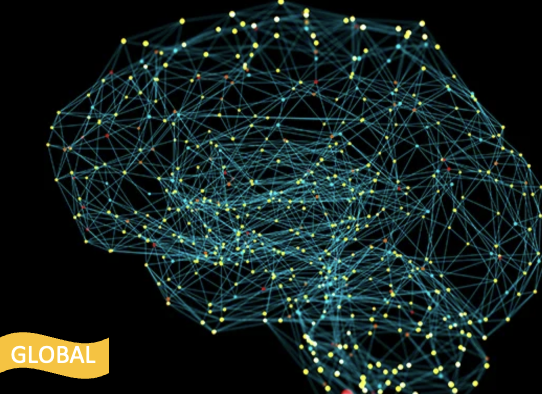
FAQs About Bias In Artificial Intelligence (AI) – Avoiding the Dystopian Potential of a Utopian Tool
Why is AI bias ? One reason: A natural human fear of trusting AI’s vaunted omniscience, whether for individuals or groups. AI is a blessing for business and big data analysis of every kind, the support of transportation, medical, and industrial applications, and making endless myriad personal and professional tasks and desires easier to achieve, more accessible, or in some cases obsolete for those of us who are mere carbon units. Its information collation, analysis, and delivery abilities alone are without precedent. But once AI is offered as a tool, not to inform our larger decisions but to make them, we start asking more questions.
Kenneth C. Broodo Natasha Allen - 19 December 2022 - Article in English
-

How deep learning will ignite the metaverse in 2023 and beyond
The metaverse is becoming one of the hottest topics not only in technology, but also in the social and economic spheres. The metaverse is slowly evolving into a consumer virtual world where it is possible to work, learn, shop, be entertained and interact with others in ways never before possible. However, most of these metaverse experiences can only continue to progress with the use of deep learning (DL), as artificial intelligence (AI) and data science will be at the forefront of advancing this technology.
Victor Dey - 22 December 2022 - Article in English
-

The Brief History of Artificial Intelligence: The World Has Changed Fast—What Might Be Next?
To see what the future might look like it is often helpful to study our history. This is what I will do in this article. I retrace the brief history of computers and artificial intelligence to see what we can expect for the future.How rapidly the world has changed becomes clear by how even quite recent computer technology feels ancient to us today.
Dr. Max Roser – 29 December 2022 - Article in English
-

AI in the Tax Industry: Can Everything Be Automated?
The tax industry is an exciting place for artificial intelligence (AI) and automation to flourish. Tax professionals must prepare and file millions of returns each year, but people aren’t the best at repeating things meticulously. They want to be creative and not just follow a script.That’s why automation has been extremely useful in cleaning up repetitive tasks — especially when calculating standard deductions.
Zac Amos - 28 November 2022 - Article in English
-

Implementation of AI in Agriculture
Farming has been re-defined by technology over the last few years. Today, technological advances have influenced the agricultural industry in many ways. Agriculture is one of the mainstay occupations in most global countries, and as the population surges and the pressure on land increases, there will be 60% more requirements for food production. Now, this is where AI and ML play their role. AI in agriculture is now showing the potential for meeting the food requirements for an additional 2 billion people globally by 2050.
Sudeep Srivastava – 13 December 2022 - Article in English
-

Top 10: Promising AI startups in 2022
As AI continues to take the world by storm and is expected to reach an estimated US$126 billion in revenue by 2025, here are the 10 most promising AI startups. As organisations navigate their digital transformations, the number of companies using AI services grew by 270% between 2015 and 2019 and, according to figures from Statista, the market is expected to reach an estimated US$126 billion by 2025.
Marcus Law – 29 November 2022 - Article in English
-

How AI And 5G Could Lead The Next Phase Of The Industrial Revolution
Artificial Intelligence is a popular technology known to accelerate sustainability. With this ability, AI today is not only sustaining a smarter future for the machines but is also laying the groundwork for the next industrial revolution by teaming up with 5G. How does this team power an innovative approach to existing processes?
Jui Bagul – 1 december 2022 - Article in English
-

New AI model calculates risk of heart attack or stroke using a single X-ray
Researchers have developed a new artificial intelligence (AI) model capable of predicting a patient’s 10-year risk of death from a heart attack or stroke—all with a single chest X-ray. The group behind this work, which includes radiologists, cardiologists and AI specialists, shared its findings at RSNA 2022 in Chicago.
Michael Walter - 28 November 2022 - Article in English
-

What is Predictive Analytics?
Predictive analytics is the use of data, statistical algorithms, and artificial intelligence (AI) and machine learning (ML) techniques to identify the likelihood of future outcomes based on historical data. The goal is to go beyond knowing what has happened and assess what will happen.Predictive analytics is being used far more in the enterprise. However, there is some confusion around it. Let’s examine what it is, how it differs from other areas of data analytics, and how it is used in the real world.
Drew Robb - 5 December 2022 - Article in English
-

Add elegance to baked foods automatically
Technology is changing rapidly, and bakeries are adapting out of necessity to keep their operations running efficiently. As labor continues to become more scarce, the baking industry is developing more autonomous systems and machines to better ensure product quality and consistency with less risk and less room for error, as smart devices use machine learning and artificial intelligence (AI) to continually improve the process
Dan Malovany – 21 November 2022 - Article in English
-

Working With Machines: AI in Work Management
The age of artificial intelligence (AI) is upon us, changing forever the way companies operate and grow. Machine learning (ML) now helps to predict and minimize delays, reduce time spent on mundane tasks, and optimize the skills and talents of the human workforce. But what does AI in a work management platform look like? And where might it take us in the future?
Rachael Kealy - 21 November 2022 - Article in English
-

Why data remains the greatest challenge for machine learning projects
Quality data is at the heart of the success of enterprise artificial intelligence (AI). And accordingly, it remains the main source of challenges for companies that want to apply machine learning (ML) in their applications and operations. The industry has made impressive advances in helping enterprises overcome the barriers to sourcing and preparing their data, according to Appen’s latest State of AI Report. But there is still a lot more to be done at different levels, including organization structure and company policies
Ben Dickson – 8 November 2022 - Article in English
-
Top 7 Full-Stack Development Trends for 2023
Full-stack developers have endless options for developing, deploying, and managing software at every layer of the tech stack. Because full-stack development is multi-disciplinary, its innovations sit at the intersection of front-end and back-end development. In this article, we break down trends and tools that full-stack developers should know for 2023.
RYAN LOFTUS - 10 NOVEMBER 2022 - Article in English
-
Use of Artificial Intelligence AI in Financial Transaction Processing and Payment Gateway Applications
In recent years, artificial intelligence (AI) has been at the heart of gateway solutions (a software module that facilitates safe and secure financial transactions between customer and merchant) for online payments. More and more payment processors are using AI in their practices to improve learning, simplify transactions and fortify security.
Dhanshree Shripad Shenwai - 7 November 2022 - Article in English
-
5 Jobs That Could Be Taken By Artificial Intelligence In The Next 10 Years
AI has well and truly entered the mainstream, with start-ups touting its potential to disrupt almost every sector imaginable. There is no doubt about the power of machine learning, especially when combined with robotics, and we look at some of the jobs that are more likely than others to be taken over by AI.
Q.ai - Powering a Personal Wealth Movement – 17 November 2022 - Article in English
-
Imaging and Artificial Intelligence Shows Potential in Olive Oil Production
Researchers tested a CNN algorithm to assess its potential for olive classification for industrial purposes, specifically its potential integration and sorting performance evaluation. Machine learning (ML) and artificial intelligence (AI) algorithms are now the most practical method for classifying and identifying food goods since they are quick and accurate.
Taha Khan – 1 Novembre 2022 - Article in English
-

The application of AI technologies in STEM education
Artificial intelligence in education (AIEd) is an emerging interdisciplinary field that applies artificial intelligence (AI) technologies in education to promote the instructional and learning process, especially in science, technology, engineering, and mathematics education (STEM education).
Weiqi Xu & Dr. Fan Ouyang - 31 Octobre 2022 - Article in English
-
Breakthrough in drug development using AI technology
Scientists have developed a novel technology by employing active learning and interpretable AI, that can contribute towards drug development.
Health Data Science - 18th February 2022 - Article in English
-
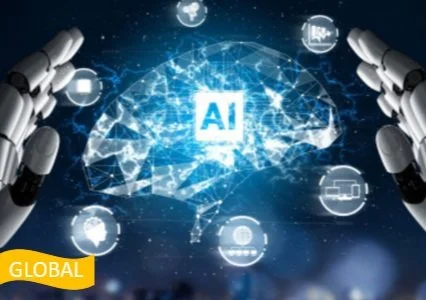
What are Radial Basis FunctioPossibilities Of Machine Learning And AI
Artificial Intelligence (AI) and Machine Learning (ML) have turned from fiction to reality with their impact on every industry. AI represents the endeavor to optimize business operations for high-level efficiency through technologies like machine learning. 10 Ways Machine Learning And AI Have Impacted Businesses
Desuvit - 2019 - Article in English
-
No-Code AI: The Game Changer for Application Development
While all companies today need the capabilities to deploy artificial intelligence (AI). However, small and medium-sized enterprises generally lack the resources to deploy powerful technologies like AI and machine learning (ML). However, code-free AI is emerging as a solution to help propel AI adoption. By making application development simpler, faster, more accessible and more affordable.
Ronald Van Loon – 14 Septembre 2022 - Article in English
-
AIOps Trends 2023: Intelligent Automation Gains Momentum
As AIOps continues to evolve, there are a couple of exciting areas that we can expect to see gather momentum in 2023 and beyond.In this era of rapid technology adoption and digital transformation across nearly all industries, enterprise ITOps are constantly evolving and being redefined as new models for technology deployment, scaling, and change acceleration emerge and are implemented.
Maitreya Natu – 25 October 2022 - Article in English
-

Artificial intelligence operations must involve ethical & responsible frameworks
As the use of AI grows, many consumers are beginning to question whether this technology and the companies that exploit it are serving them properly and ethically. This has led to an increased focus on how companies use customer data. For companies using AI technology, protecting customers is not only an ethical issue, but also a matter of business sense.
Diego Bartolome - 2 Septembre 2022 - Article in English
-

Clinical AI Gets the Headlines, but Administrative AI May Be a Better Bet
AI for health care is all the rage. Who wouldn’t be excited about applications that could help detect cancer, diagnose COVID-19 or even dementia well before they are otherwise noticeable, or predict diabetes before its onset? Machine and deep learning have already been shown to make these outcomes possible.
Thomas H. Davenport and Randy Bean - 11 April 2022 - Article in English
-

OptimaLab team improves neural network training with NSF-Intel Grant
In collaboration with other researchers, Dr. Kyrillidis has developed a new class of distributed neural network training algorithms, called independent subnetwork training or IST. Thanks to a competitive grant funded by the National Science Foundation and Intel. More information in the article.
Carlyn Chatfield – 1 september 2022 - Article in English
-

What Is Edge AI and How Does It Work?
Learn about recent advances in AI efficiency, discover what edge AI is, its benefits and how it works, examples of edge AI use cases, and new opportunities for edge AI that were previously unimaginable
TIFFANY YEUNG - 17 February 2022 - Article in English
-

New Chip Rewires Itself Like the Brain to Help AI Learn Continuously
All the new advances by researchers creating electronic circuits to mimic the incredible power of the brain is its ability to rewire itself as it learns.
Edd Gent – 7 February 2022 - Article in English
-
Self-Driving AI Model Bundles Perception and Control
In this article you will find an explanation of the development of an artificial intelligence model for self-driving vehicles that combines the perception and control modules and makes them work simultaneously, all of which was carried out by a research team from Toyohashi University of Technology.
David Curry - 6 Octobre 2022 - Article in English
-
Technology helps self-driving cars learn from own 'memories'
Tom Fleischman - 22 June 2022 - Article in English
-
What is AI? Here's everything you need to know about artificial intelligence
Nick Heath - 23 July 2021 -Article in English
-
Artificial Intelligence And Data Privacy – Turning A Risk Into A Benefit
David A. Teich - 10 August 2020 - Article in English






